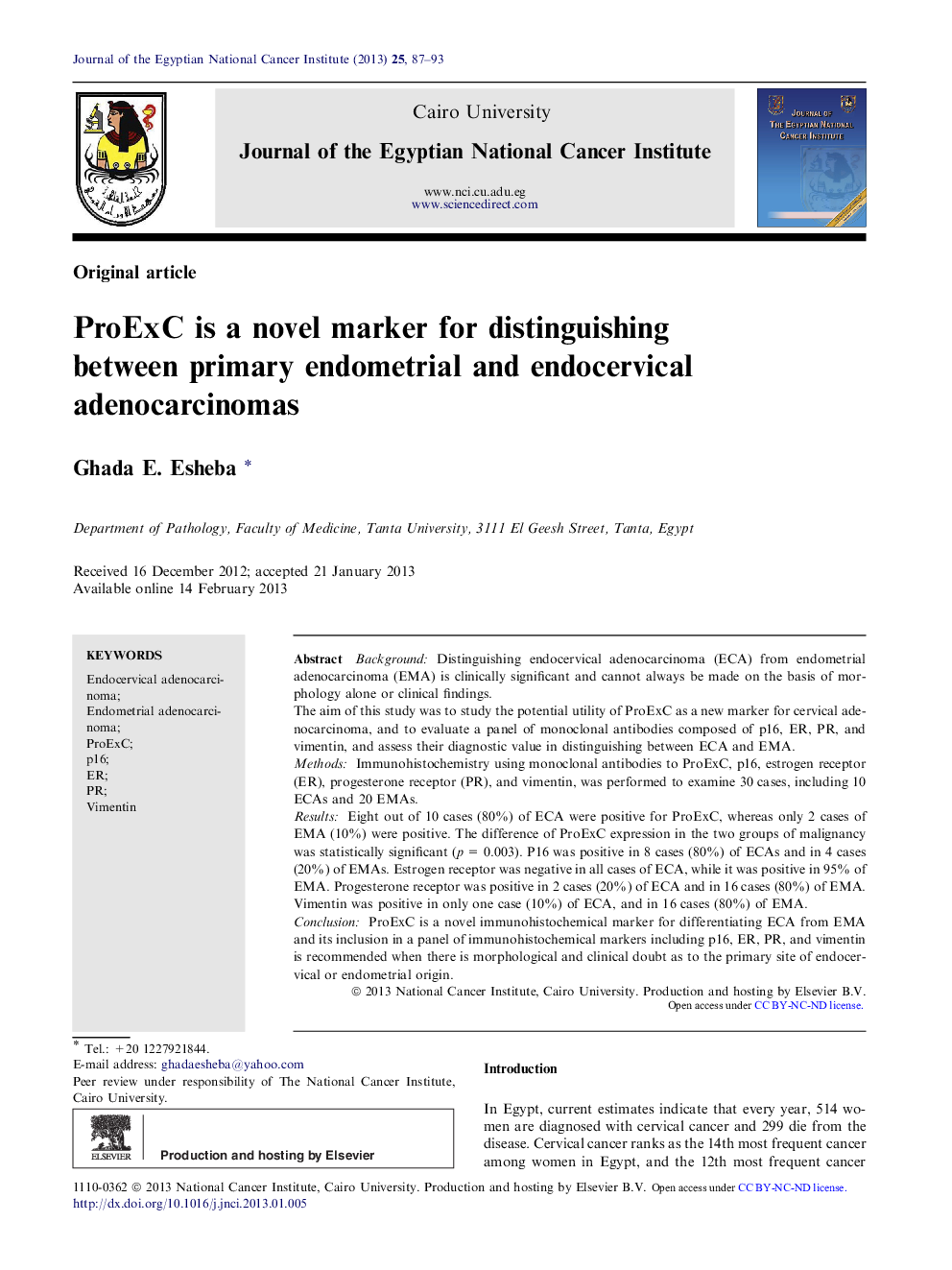| Article ID | Journal | Published Year | Pages | File Type |
|---|---|---|---|---|
| 3989089 | Journal of the Egyptian National Cancer Institute | 2013 | 7 Pages |
BackgroundDistinguishing endocervical adenocarcinoma (ECA) from endometrial adenocarcinoma (EMA) is clinically significant and cannot always be made on the basis of morphology alone or clinical findings.The aim of this study was to study the potential utility of ProExC as a new marker for cervical adenocarcinoma, and to evaluate a panel of monoclonal antibodies composed of p16, ER, PR, and vimentin, and assess their diagnostic value in distinguishing between ECA and EMA.MethodsImmunohistochemistry using monoclonal antibodies to ProExC, p16, estrogen receptor (ER), progesterone receptor (PR), and vimentin, was performed to examine 30 cases, including 10 ECAs and 20 EMAs.ResultsEight out of 10 cases (80%) of ECA were positive for ProExC, whereas only 2 cases of EMA (10%) were positive. The difference of ProExC expression in the two groups of malignancy was statistically significant (p = 0.003). P16 was positive in 8 cases (80%) of ECAs and in 4 cases (20%) of EMAs. Estrogen receptor was negative in all cases of ECA, while it was positive in 95% of EMA. Progesterone receptor was positive in 2 cases (20%) of ECA and in 16 cases (80%) of EMA. Vimentin was positive in only one case (10%) of ECA, and in 16 cases (80%) of EMA.ConclusionProExC is a novel immunohistochemical marker for differentiating ECA from EMA and its inclusion in a panel of immunohistochemical markers including p16, ER, PR, and vimentin is recommended when there is morphological and clinical doubt as to the primary site of endocervical or endometrial origin.
